Your cart is currently empty!
8 Tips to Improve Your Handwriting (Plus a Free Worksheet)
In this article, you’ll find eight tips for producing neat and confident penmanship. You can also download a free cursive worksheet to improve your handwriting! Did you know: TPK offers a comprehensive handwriting improvement online course. You can learn more by clicking here.
[courier_sharing_display className=”aligncenter”]
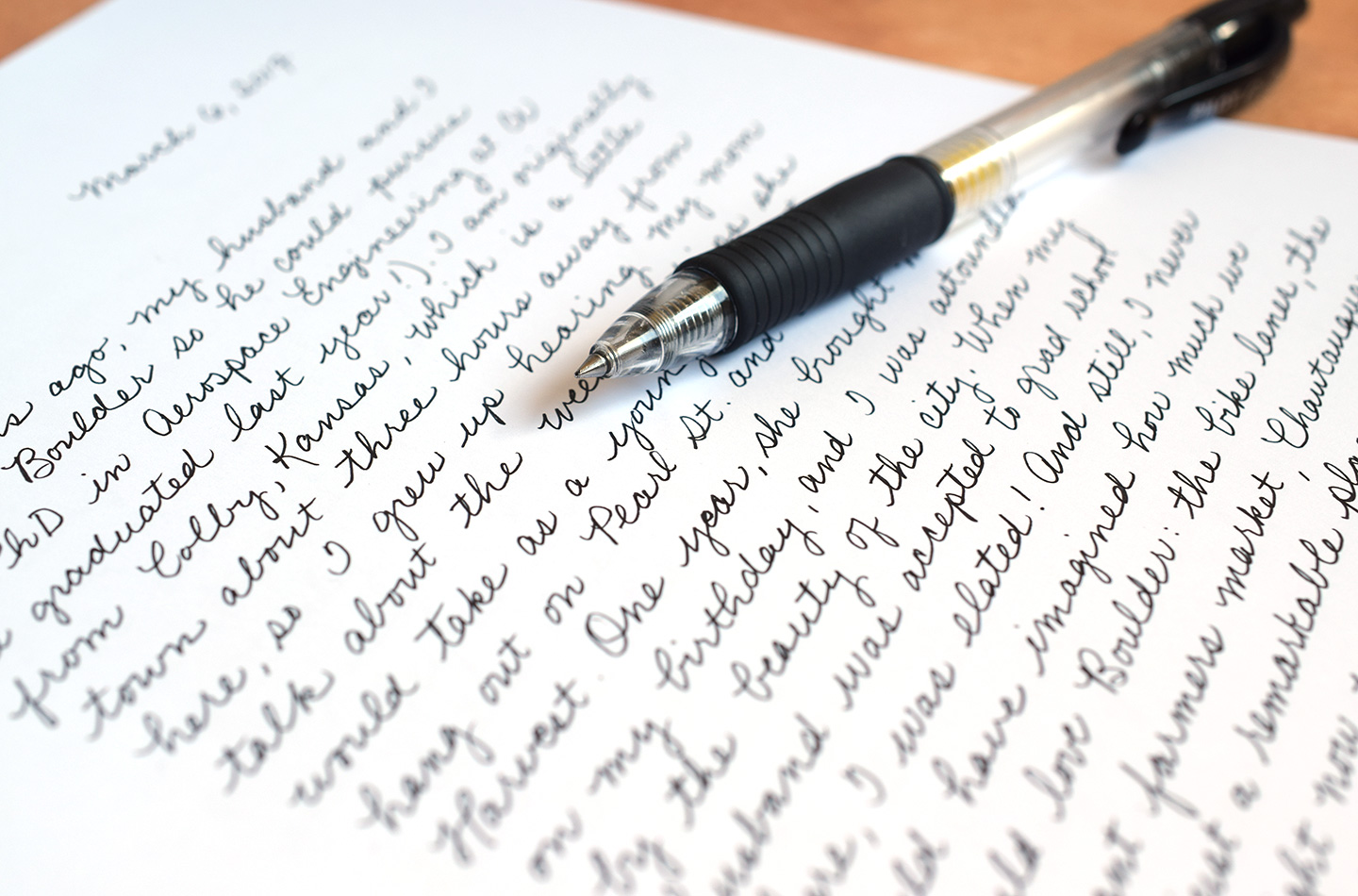
People often assume that calligraphy and handwriting are synonymous, but they’re not. In general, calligraphy is comprised of stylized, embellished letters — it’s more art than writing. Conversely, handwriting refers to the style and technique that you use for everyday jotting. Handwriting needs to be quicker and more casual than calligraphy. While everyone has their own personal handwriting style, there’s always room for improvement! In this article, you’ll find eight tips to help you improve your handwriting in video and written form — plus a free worksheet.
How to Improve Your Handwriting: The Video
Let’s have a little chat about how to improve your handwriting! You’re invited into my snowy sunroom to talk about all the different ways you can make your penmanship a bit better:
[youtube https://www.youtube.com/watch?v=IYdujqjNb1s]
How to Improve Your Handwriting: The Article
1. Use a Nice Pen
The adjective “nice” is subjective — you’ll have to hunt to find the pen that works for you! Right now, I’m loving Muji 0.38 mm pens because they’re responsive and write such a fine line. I like Sakura Gelly Roll white pens for writing on dark papers. Keep in mind that preferences change, though, and there’s always a new pen or pencil to discover.
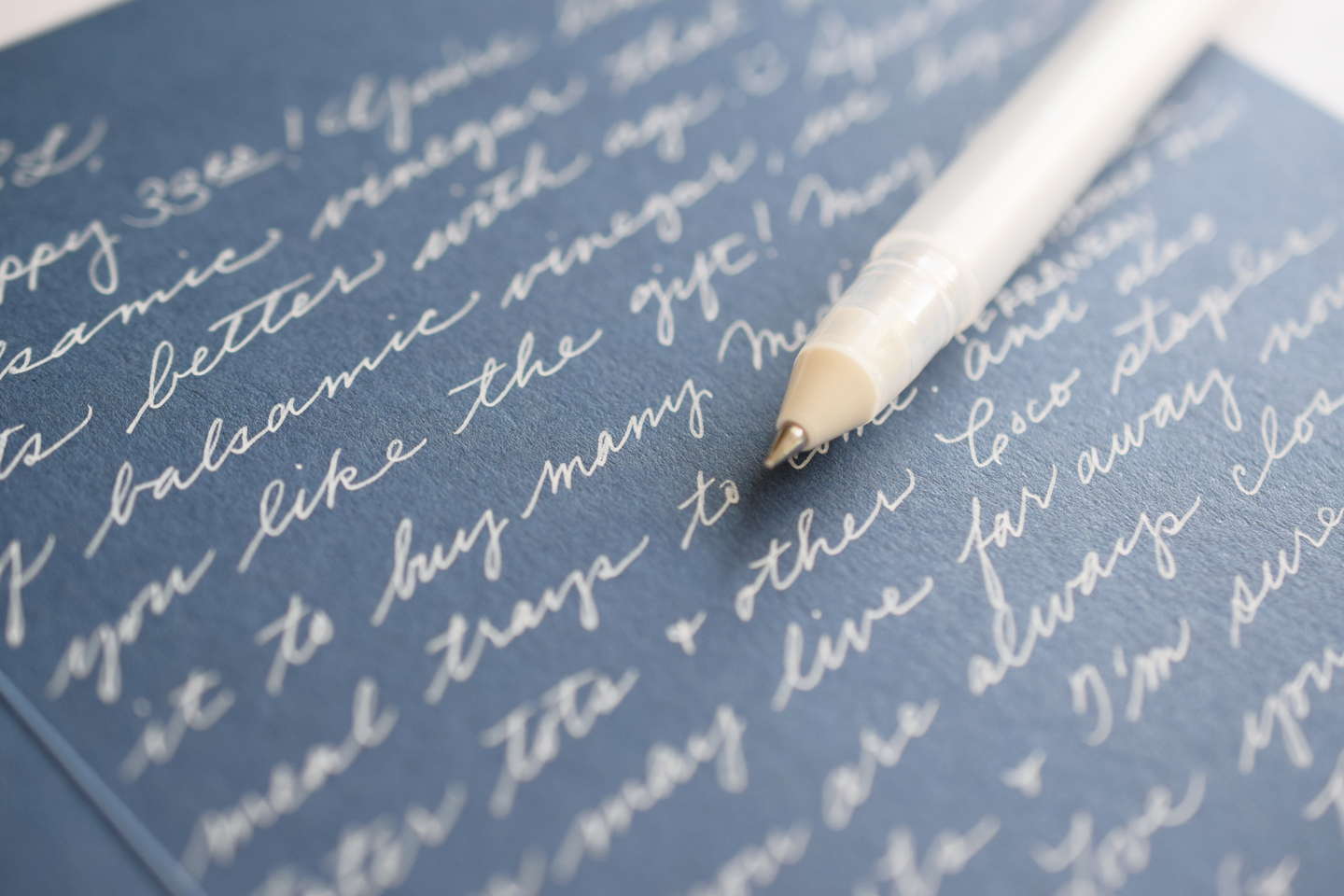
White gel pens are wonderful for writing on dark-colored papers. Handwriting purists tend to love fountain pens, and I happily agree that my Pilot Falcon is fabulous. But, don’t be fooled into thinking that a pen will magically transform your handwriting. Yes, a nice pen helps, but it’s not the be-all, end-all of pretty penmanship.
2. Maintain a Relaxed Grip
A relaxed, fairly loose grip is one of the main things that will improve your handwriting. None of the muscles in your hand should feel tense or flexed, and your fingernails shouldn’t be white from squeezing the pen’s barrel.

The more you can relax your hand and your body, the better. Many people tend to clutch the pen, which will result in an achy hand and shaky writing. We often clutch without realizing we’re doing it, so try to mentally check yourself every few minutes to make sure you’re still holding the pen comfortably.
3. Improve Your Handwriting With Drills
Whether you plan on writing in cursive or print, it can be difficult to form nice letters without warming up. Doing a couple of simple drills will help you to write clear, confident characters. You can use the Drills section of the Improve Your Cursive Worksheet …

… Or you can doodle a few “telephone wires” or similar forms.
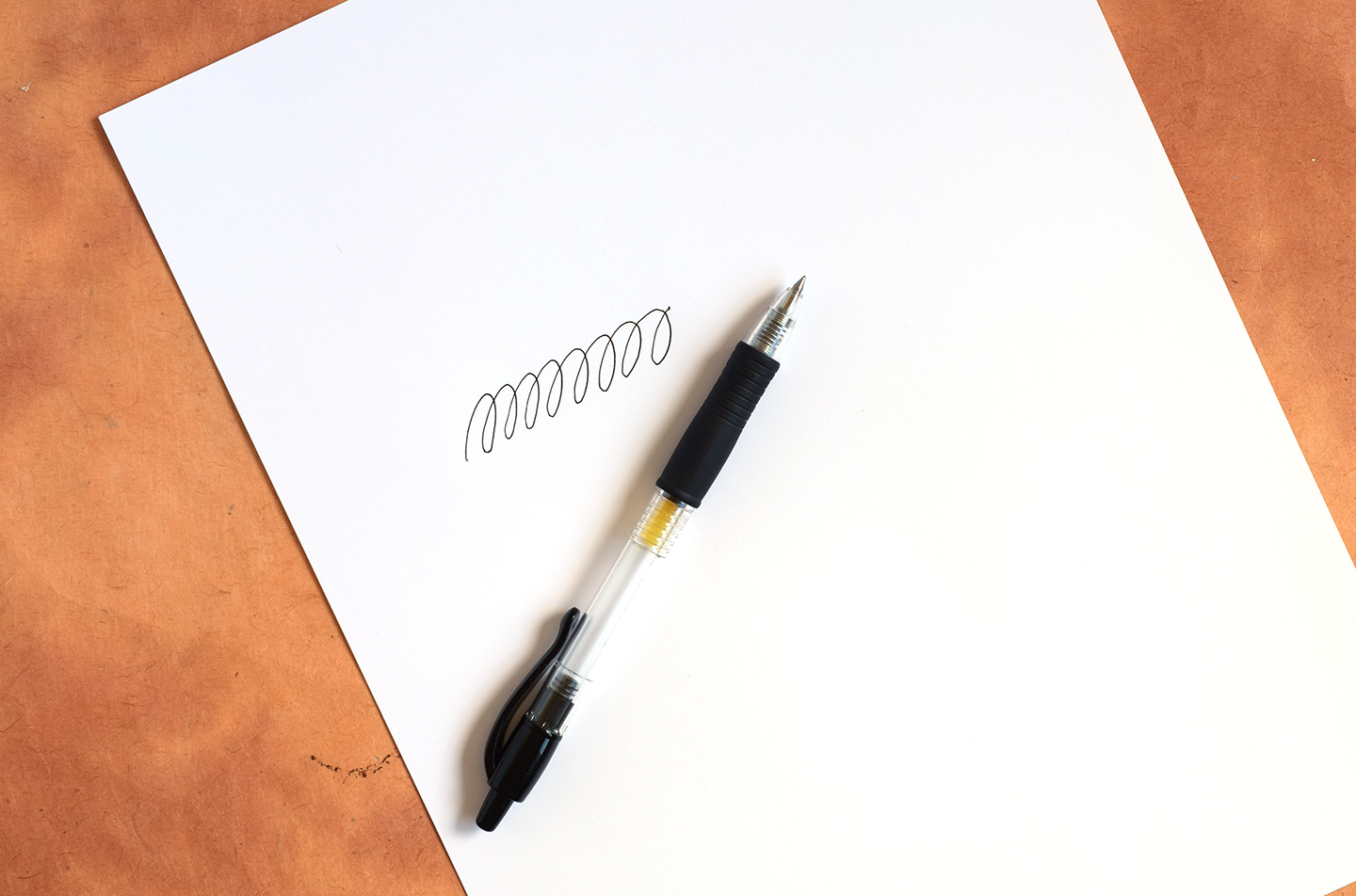
If you’re interested in additional drills, the Improve Your Handwriting Online Course features several helpful exercises! Handwriting drills tend to be simple but mighty, and the more you do them, the more of a difference you’ll notice.
ENROLL IN THE IMPROVE YOUR HANDWRITING ONLINE COURSE
4. Experiment with Paper Rotations
As children, we are generally taught to keep our paper in a vertical position in front of us. If that works for you, great! If not, feel free to experiment with different paper rotations. Keeping the paper at a certain angle can go a long way in helping you to improve your handwriting!

Many right-handed people are fine with the traditional vertical paper position, but I’m not one of them. I have always found it easier to write — particularly in cursive– when my paper has a severe counterclockwise rotation. Lefties should try rotating their paper clockwise. For clarification, see my How to Improve Your Handwriting video.
5. Practice with a Worksheet
If you want a structured way to improve your handwriting, I made a free worksheet for you! It’s three pages long and focuses on cursive writing — you can download it by clicking here. Basically, the worksheet takes you through drills, capital and lowercase letters, words, and sentences.
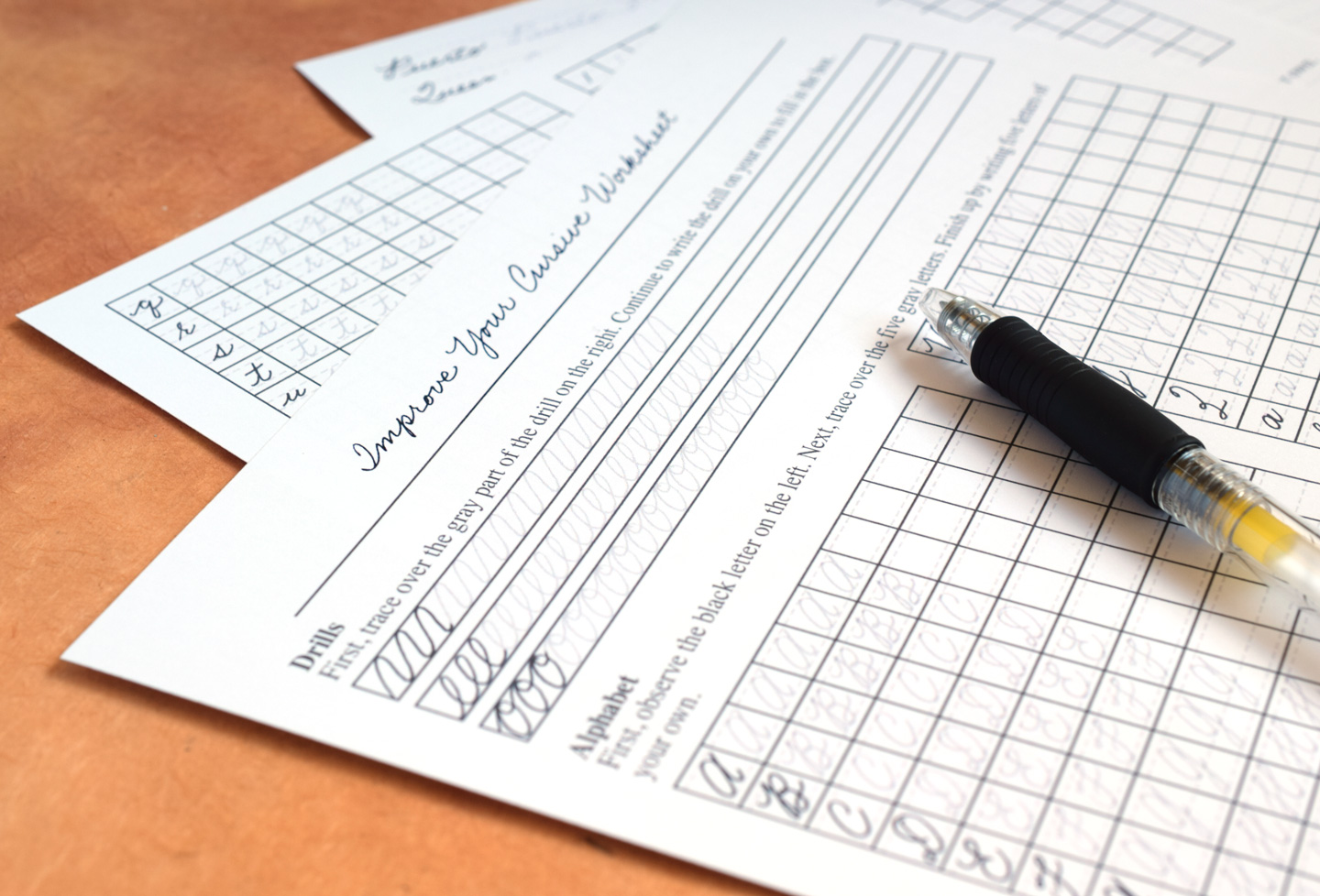
The cursive writing featured in the worksheet set isn’t any sort of formal style. Instead, it focuses on the letterforms that I, personally, use in everyday cursive handwriting. Those letters are easy to create, and they connect to each other beautifully to make for quick writing. For intensive exercises and instructions over how to write vintage-style cursive, check out TPK’s Elegant Cursive Handwriting Worksheet. It’s a fabulous investment if you want to infuse your penmanship with sophistication.
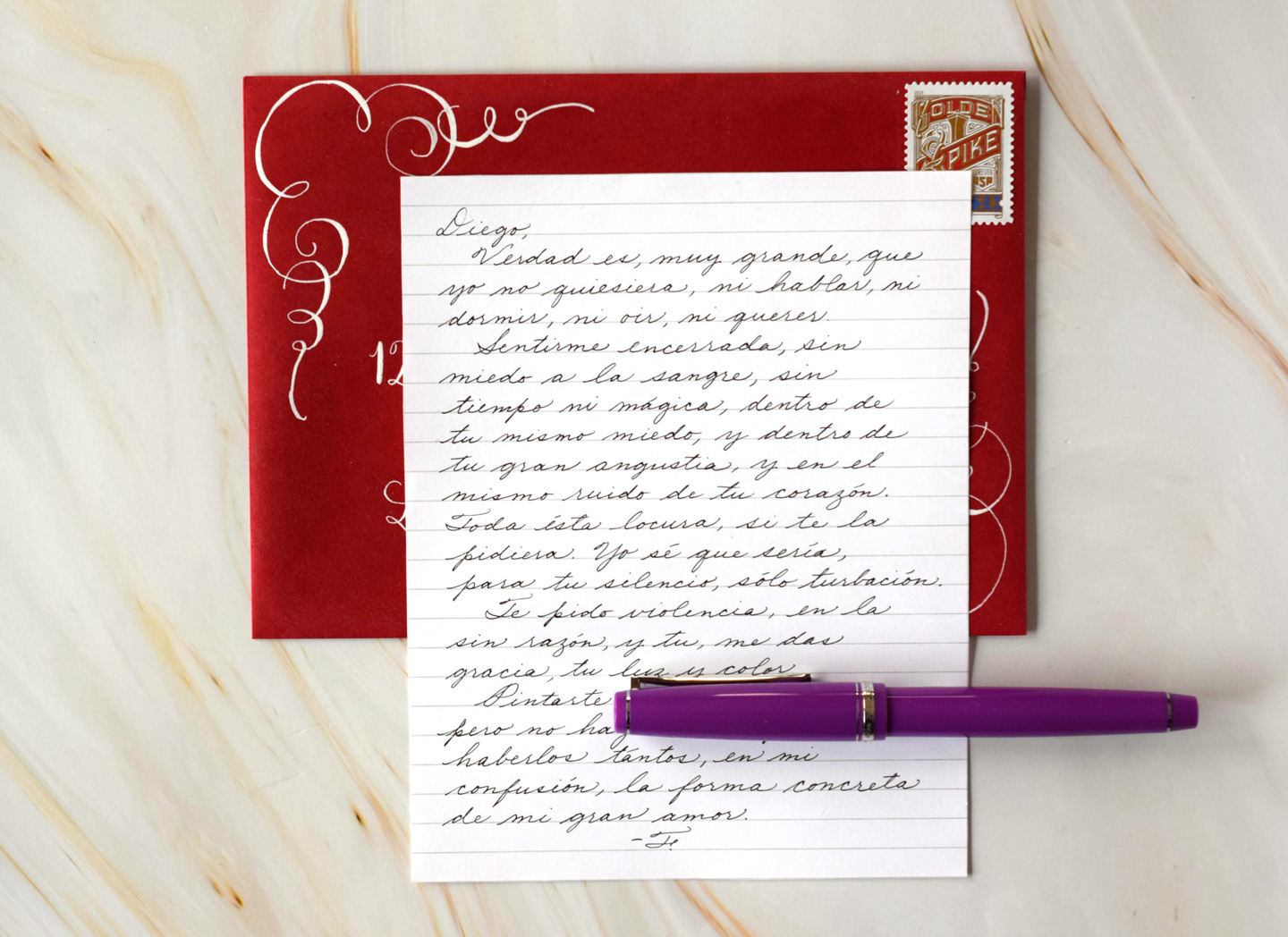
Love this cursive style? Check out the Elegant Cursive Handwriting Worksheet. Here’s a list of all the structured handwriting worksheets and instructions that TPK has to offer:
- Improve Your Cursive Worksheet Set – A free worksheet with helpful practice opportunities
- Grammy’s Handwriting Exemplar – A free worksheet that offers letterforms based on my grandmother’s beautiful handwriting
- Learn Cursive Worksheet for Kids (and Adults!) – A worksheet that teaches you how to write in cursive with the help of this free supplementary course
- Elegant Cursive Handwriting Worksheet – A detailed worksheet set that teaches you how to write in elegant, vintage-style penmanship
6. Sneak in Practice to Improve Your Handwriting
Just like anything else, you will improve your handwriting with use. The more you write using good habits and implementing styles that appeal to you, the better your handwriting will get.

You can get practice through a number of ways — for example, you might send someone a hand-written letter in place of an email or text. If you have the time and interest, you can start writing in a journal every night. Entries don’t have to be long; they can be short accounts of how your day went!
7. Write on Lined Paper or Use a Template
Writing nice, balanced words are a big shortcut to neat handwriting! If you want to write a letter to someone, you can put a piece of notebook paper under printer paper. More than likely, you’ll be able to see the notebook paper lines through the printer paper, and you can use those lines as guidelines for even writing. Or, if you don’t mind the lines, you can write someone a letter directly on notebook paper.
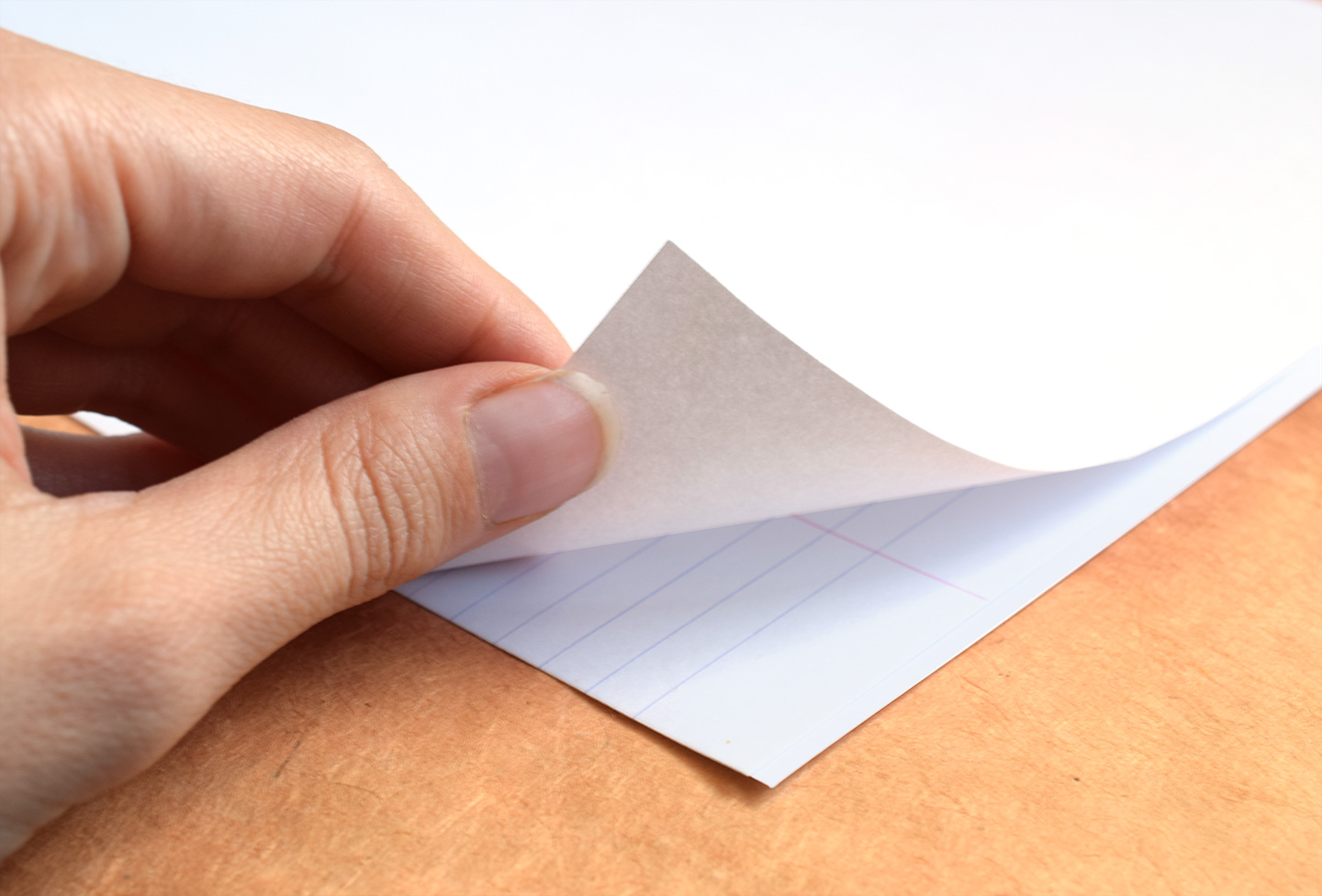
This point reminds me of another tip: always use a “padding” piece of paper. No matter what piece of paper you’re writing on, it should always have another piece of paper under it. For some reason, the slightly cushier surface provided by two pieces of paper makes it easier for all pens to write!
8. Embrace Your Personal Style
Handwriting is a very fluid, personal thing that is always evolving. It’s not like calligraphy, where you more or less write the same every time. Instead, you’ll have neat days, and you’ll have not-so-neat days (like the notes pictured below).

No matter how your handwriting looks, it is a wonderful reflection of you and your mood. That’s why people love receiving handwritten notes: they represent a piece of you! So, don’t get too hung up on a radical change: instead, focus on making clearly formed alphabet characters that are clear and legible.
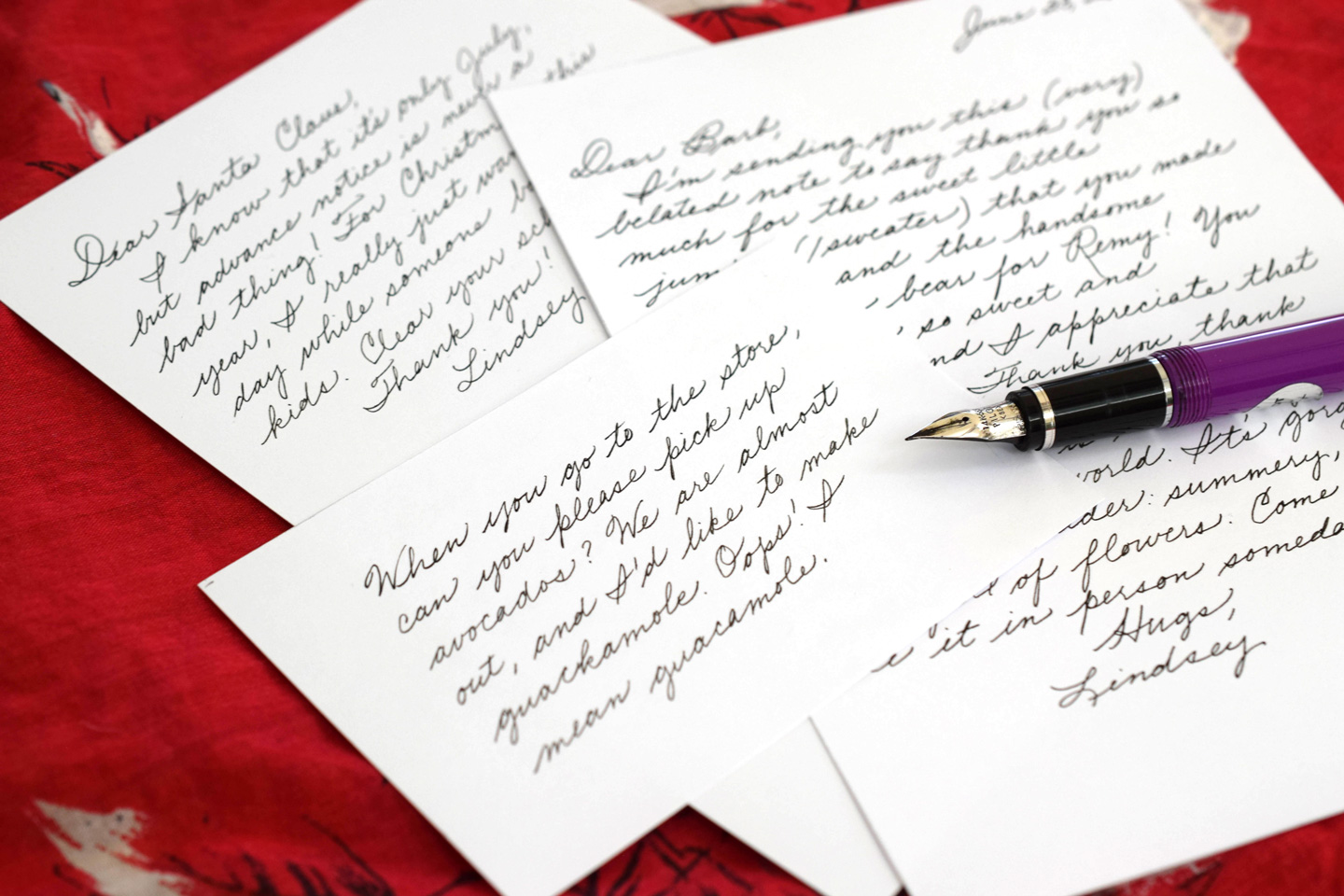
Want to learn more about how to write beautiful handwritten notes? See this article. I hope that you enjoyed this article, and that it inspires you to ditch the keyboard and write something by hand this weekend! Don’t forget that you can download the Improve Your Cursive Worksheet for free if you want a cursive refresher. It’s not a complicated little worksheet, and it should be helpful.
Thanks very, very much for reading TPK, and enjoy the rest of your day!
Warmly,
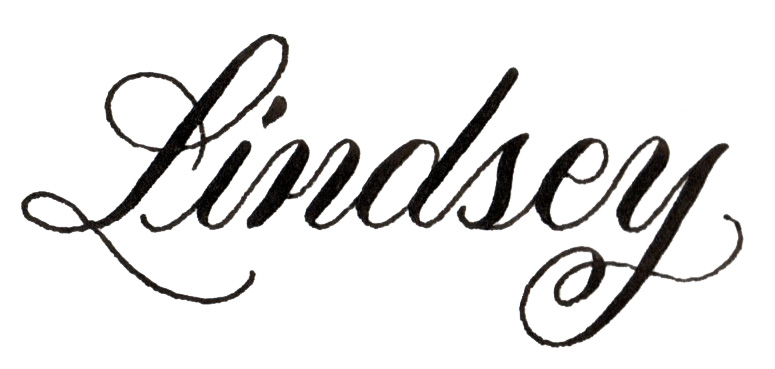
This article was first posted in March of 2017. It has been updated to include new photos, a freshly-filmed video, and additional resources.
*This post contains affiliate links to Amazon
